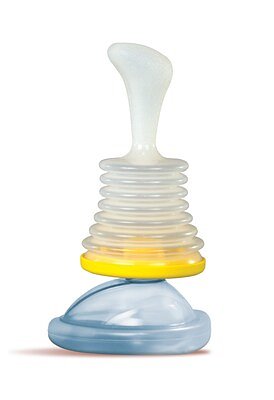
Beyond the Heimlich: LifeVac's 3,000 Saves Signal Shift in Emergency Response
A father's mission has become a lifeline for thousands. LifeVac’s milestone – saving 3,000 children from choking – highlights a growing market and a potentially disruptive shift in emergency care protocols.
Beyond the Heimlich: LifeVac's 3,000 Saves Signal Shift in Emergency Response
By Brian Nelson
NESCONSET, N.Y. – In a landscape increasingly focused on preventative healthcare and rapid response, one company is quietly marking a significant milestone. LifeVac LLC recently announced it has saved the lives of 3,000 children using its non-invasive airway clearance device, a figure that underscores a growing shift in how we approach choking emergencies. While the Heimlich maneuver remains a staple of first aid training, LifeVac is rapidly gaining traction as a potentially more effective – and easier to use – alternative, particularly for those lacking formal training.
Founded in 2010 by Arthur Lih after a personal tragedy involving a child choking, LifeVac was born from a desire to create a better solution. “Every single save reminds us why we do this,” Lih stated in a press release. “Three thousand children are still here because someone had a LifeVac nearby. That's what matters. That's what drives us.” The device utilizes a one-way valve system to create suction, dislodging obstructions without requiring forceful abdominal thrusts. This simple yet innovative approach is resonating with parents, schools, and first responders alike.
A Growing Market for Airway Clearance
The global airway clearance devices market is experiencing robust growth, projected to reach significant levels in the coming years. Industry reports indicate a CAGR of 7.5% between 2023 and 2030, driven by increasing awareness of choking hazards and a demand for more effective rescue tools. LifeVac is positioned as a key player in this burgeoning market, competing with devices like the Dechoker and traditional methods.
However, the competitive landscape is evolving. “There’s a growing recognition that current training isn’t always sufficient,” explains a medical professional familiar with emergency response protocols, speaking anonymously. “The Heimlich requires proper technique, and many people simply aren't confident or able to perform it effectively under pressure. Devices like LifeVac offer a simpler, more intuitive solution.”
Beyond Traditional First Aid
Choking remains a leading cause of injury and death in young children. According to the CDC, choking incidents account for thousands of emergency department visits annually, with food items like grapes, hot dogs, and candies being primary culprits. While prevention remains paramount, the availability of effective rescue tools is crucial when accidents occur.
The increasing adoption of LifeVac isn’t just about ease of use; it’s also about accessibility. The device is readily available for purchase online and in retail stores, making it a convenient option for families and caregivers. Schools and daycare centers are also increasingly stocking LifeVac units as part of their emergency preparedness plans. “We’ve seen a significant increase in inquiries from schools wanting to implement LifeVac as a standard safety measure,” confirms a representative from a leading educational supply company.
Regulatory Compliance and Efficacy
LifeVac's success isn’t solely based on market demand; it’s also rooted in rigorous regulatory compliance. The device is registered with the FDA as a Class I medical device, certified by the MHRA in the UK, and listed in the Australian Register of Therapeutic Goods (ARTG). This commitment to quality and safety has earned the trust of healthcare professionals and consumers alike.
While large-scale clinical trials are still limited, a growing body of anecdotal evidence and case studies supports the device’s efficacy. Medical journals feature reports of successful LifeVac rescues, and online reviews consistently praise its effectiveness. One parent, speaking anonymously, shared their experience: “My toddler choked on a piece of food, and I panicked. I grabbed the LifeVac, and it dislodged the obstruction almost immediately. It was a lifesaver.”
A Shift in Emergency Response
The 3,000-save milestone represents more than just a statistic; it signals a potential shift in how we approach emergency response to choking incidents. While the Heimlich maneuver will likely remain a fundamental component of first aid training, devices like LifeVac are offering a valuable alternative – and potentially a more effective one – for those lacking formal training or facing challenging circumstances.
“We’re seeing a growing acceptance of non-invasive airway clearance devices as a valuable addition to the emergency response toolkit,” says an emergency medical technician, speaking anonymously. “They’re not meant to replace traditional methods entirely, but they can certainly provide an extra layer of protection, especially in situations where time is of the essence.”
As LifeVac continues to gain traction, the company is focused on expanding its reach and raising awareness of choking hazards. With a commitment to innovation, regulatory compliance, and customer satisfaction, LifeVac is poised to remain a leader in the airway clearance market – and continue saving lives for years to come.
📝 This article is still being updated
Are you a relevant expert who could contribute your opinion or insights to this article? We'd love to hear from you. We will give you full credit for your contribution.
Contribute Your Expertise →